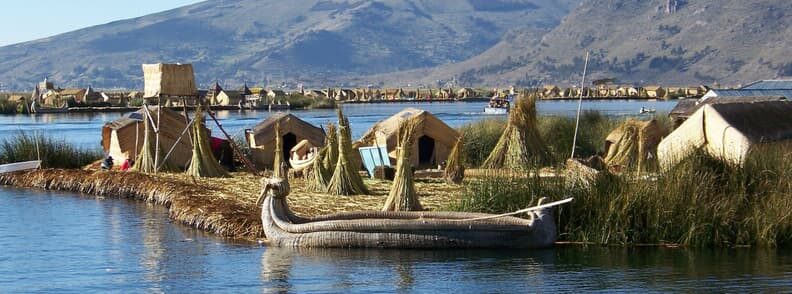Lake Titicaca is the highest navigable lake in the world, and while you can visit from both Peru and Bolivia (it’s on the border of the two), cities like Puno make it very accessible for including on the end of a trip to Machu Picchu.
While it may be a bit of a detour to add to an itinerary for Peru (taking the bus is the budget-friendly way to do it), it’s worthwhile to plan a trip here; the lake is of great cultural and historical importance to the people of Peru, and it’s been a source of sustenance and spiritual significance for the indigenous people of the area for centuries.
The lake was considered a sacred site by the Incas and other pre-Columbian civilizations who lived here, and it’s still home to several indigenous communities today, who continue to live on the floating islands – living proof of their ancestor’s history.
Visiting Lake Titicaca is a unique experience that everyone traveling to Peru should do. Regardless of whether you’re going for the stunning scenery, rich cultural heritage, or to mingle with the villagers, here are the top things to do on Lake Titicaca Peru.
Top 5 things to do on Lake Titicaca
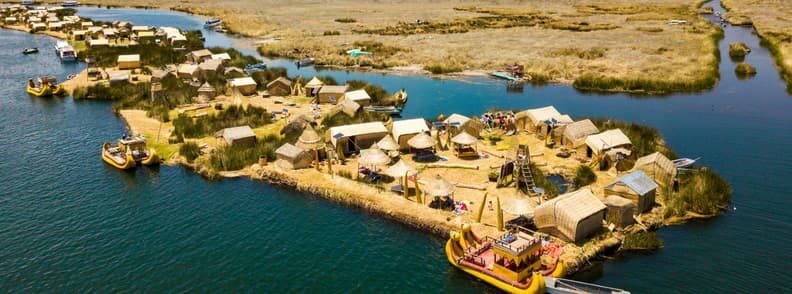
1. Visit the floating islands of Uros
The Uros people have lived on the floating islands on Lake Titicaca for centuries, and they’re famous for making their homes and boats from the totora reeds that grow in the shallow waters. The reeds are tightly bundled together to form man-made islands, and these are anchored to the bottom of the lake but are still able to move with the wind and currents.
The community has traditionally relied on fishing and hunting, and growing crops like potatoes and quinoa across the islands. Their way of life is still closely tied to the lake and its resources, though tourism has recently become a main source of income.
As a traveler, you can visit and learn about their way of life, and even stay overnight. If you’re traveling from Cusco to Puno after having visited Machu Picchu, I do recommend staying overnight, as it can be up to an 8-hour bus ride.
Like many indigenous communities around the world, the Uros people are now facing a number of challenges, including environmental degradation and the loss of traditional knowledge and practices, and many have been forced to leave their islands and resettle on the mainland in search of better living conditions and economic opportunities. As such, I recommend visiting sooner rather than later, while the cultural practices are still alive.
2. Take a boat tour
Taking a boat tour is a great way to actually immerse yourself in the Lake’s scenery and culture (without getting wet!), and after you’ve taken the boat out to the floating islands of Uros, it’s worthwhile exploring other islands.
The scenery is the main reason to take a boat tour, as while it’s one thing to look around from the mainland, it takes a completely different form when you’re out on the water. The lake has a unique and diverse landscape that includes snow-capped mountains, rolling hills, and lush green valleys. It’s surrounded by colorful towns and villages, which you can’t really appreciate the view of from the shore.
3. Visit Puno Cathedral
Puno Cathedral is a beautiful colonial-style church, which can be admired from the outside for its architecture, but if you head inside, there’s a noteworthy collection of religious art.
The cathedral was built in the 18th century, during the Spanish colonial period, and it’s an important historical and cultural landmark in the region, so worth a stop even if you’re not religious. It was built in the Baroque style, so there are a lot of intricate carvings and sculptures on both the facade and interior.
If you head inside, the altarpiece is considered one of the best pieces of colonial religious art in South America.
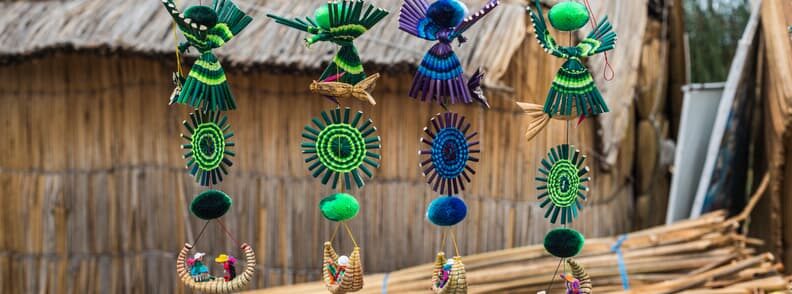
4. Shop at Puno market
Puno market may be on the mainland, but it’s one of the best places to shop for souvenirs and interact with the local community who live along Lake Titicaca.
Because of the rich cultural diversity here, this is one of the most vibrant and colorful markets in Peru. It’s also known as Mercado de la Merced, and you can pick up a wide range of things like textiles and clothing, authentic handmade crafts, and locally sourced produce to taste the flavors of the region.
Pro tip: This is also a great place to find traditional Andean musical instruments that have been individually hand-carved.
Even if you’re visiting Uros, the market is another chance to interact with the local community. It’s always a hub of activity, with vendors and shoppers from all over the region coming together to trade and socialize. You can learn about the customs and traditions of the Andean people through conversations with locals, which is a great way to go if you don’t like guided tours.
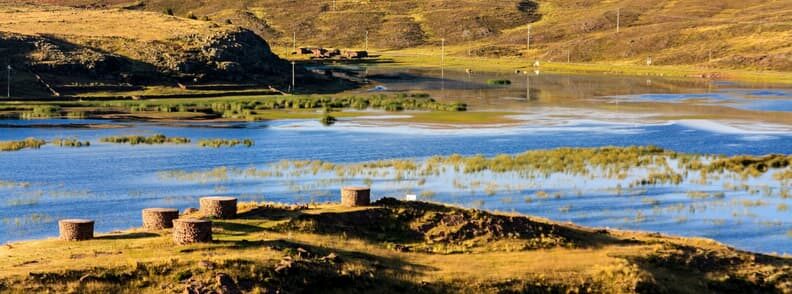
5. Visit the Sillustani funerary towers
Sillustani is a pre-Columbian burial site on the shores of Lake Umayo, about an hour from Puno. It has large stone towers called chullpas, which were used as tombs by the ancient people of the area.
These towers date back to the Incan Empire and offer a glimpse into the culture and beliefs of the pre-Columbian people who lived here. It’s an archeological site where the elite members of Incan society are believed to have been buried.
It’s worth a visit to see the intricate stonework up close, and there are other ruins you can explore like houses, terraces, and a fortress, which allows you to use your imagination for what it would have been like in daily life of Incan society on the shores of Lake Titicaca.
Can you swim in Lake Titicaca?
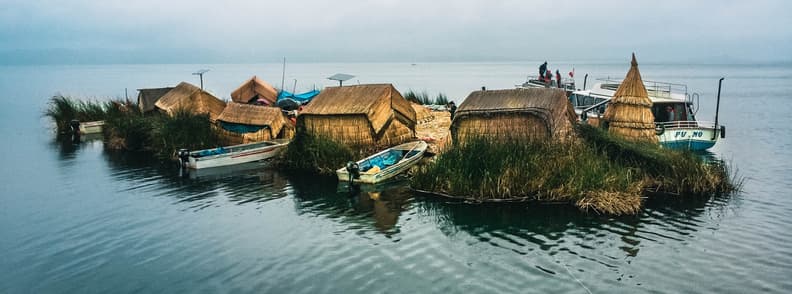
This is one of the most common questions I get about Lake Titicaca, and the short answer is yes – but it’s not recommended.
If you want to swim to say you’ve swum in the highest navigable lake in the world, by all means, be our guest! But the water temperature is quite cold around 10 to 15 degrees Celsius, and you may need to run in and run back out again!
Because of how cold it is, swimming for a long period has potential health risks (remember that this is a high-altitude lake, so could be very different from what you’re used to at home), such as altitude sickness, hypothermia, and sun exposure.
I would also caution you to be aware of local regulations around swimming in the lake, as some specific areas may be restricted or protected. If you decide you’d like to swim, please inquire about the regulations and make sure you respect the natural and cultural heritage of the lake.

Mirela Letailleur is a Romanian travel blogger living in the South of France. She writes on The Travel Bunny travel blog about affordable travel in Europe. Creator of unique free travel guides and local travel expert. Problem solver. Wannabe coffee guru.
After discovering the best things to do on Lake Titicaca, check out
7 budget-friendly things to do in Peru this year

